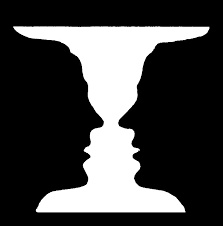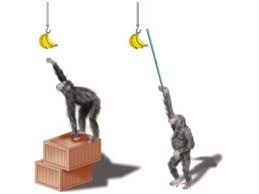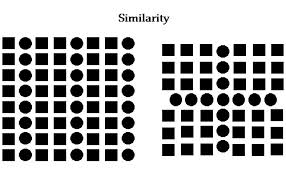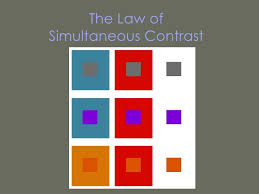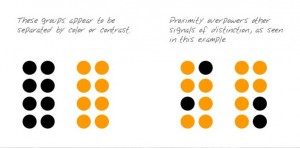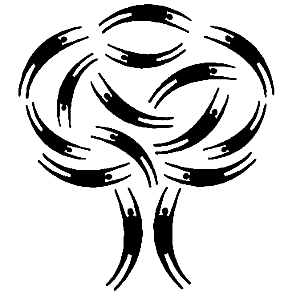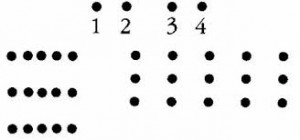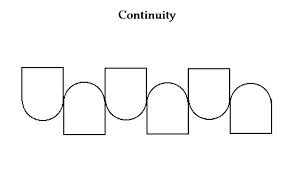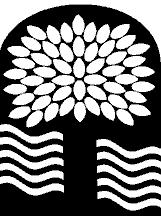Dr. V.K.Maheshwari, M.A(Socio, Phil) B.Sc. M. Ed, Ph.D
Former Principal, K.L.D.A.V.(P.G) College, Roorkee, India
Learning means to bring changes in the behaviour of the organism. It is very difficult to give a universally acceptable explanation of learning because various theories developed by psychologists attempt to explain the process from different angles.
During the first quarter of 20th century the quarrels within academic psychology lay chiefly inside the framework of association psychology .Structuralism, functionalism and behaviourism were all members of the association family. They are all examples of the working out of an empirical methodology of science, where by the accumulation of facts was supposed to lead one to the proper conception of nature.
Meaning of Gestalt Theory
The Gestalt theorists were the first group of psychologists to systematically study perceptual organisation around the 1920’s, in Germany. They were Johann Wolfgang von Goethe, Ernst Mach, and particularly of Christian von Ehrenfels and the research work of Max Wertheimer, Wolfgang Köhler, Kurt Koffka, and Kurt Lewin According to the Gestalt psychologists certain features in visual perception are universal. In semiotic terms, these universal features can be thought of as a perceptual code.
Gestalt is a sensual theory, what we see is a result of light and dark objects, edges and contours that we form into a whole image. Sensual theories are of a lower order of thinking than perceptual theories, such as semiotics, that are concerned with the meaning we attach to what we see.
Dissatisfied with the behaviourist approach of learning, the psychologists tried to see learning as a more deliberate and conscious effort of the individual rather than a mere product of habit formation or a machine-like stimulus-response connection. According to them the learner does not merely respond to a stimulus, but mentally processes what he receives or perceives. Thus learning is a purposive, explorative and creative activity instead of trial and error.Things cannot be understood by the study of its constituent parts only ,bu actually it is understood only by perceiving it as a totality or whole.
Gestalt theory focused on the mind’s perceptive. The word ‘Gestalt’ has no direct translation in English, but refers to “a way a thing has been gestalt; i.e., placed, or put together”; common translations include ‘form’ and ‘shape’. Gaetano Kanizca refers to it as ‘organized structure’. Gestalt theorists followed the basic principle that the whole is greater than the sum of its parts. In other words, the whole (a picture, a car) carried a different and altogether greater meaning than its individual components (paint,canvas,brush;or tire, paint, metal, respectively). In viewing the “whole,” a cognitive process takes place –the mind makes a leap from understanding the parts to realizing the whole.
Gestalt theory was introduced as a contrast to at the time dominant structuralism, which claimed that complex perceptions could be understood through breaking them into smaller elementary parts of experience, like splitting graphical forms into sets of dots or melody into sequence of sounds. Gestalt theory attacked this theory and holds that same melody can be recognized if transposed into another key and perception of a rectangle can be achieved through other forms than four lines. The idea of Wertheimer was that the ability to perceive objects was an ability of the nervous system, which tends to group together objects that are nearby, similar, form smooth lines, form most of the shape we can recognize.
According to Gestalt psychology, the whole is different than the sum of its parts. Based upon this belief, Gestalt psychologists developed a set of principles to explain perceptual organization, or how smaller objects are grouped to form larger ones. These principles are often referred to as the ‘laws of perceptual organization.’
| Gestalt (t German word means form or whole) is a psychology term which means “unified whole”. It refers to theories of visual perception developed by German psychologists in the 1920s. These theories attempt to describe how people tend to organize visual elements into groups or unified wholes when certain principles are applied. |
Gestalt is a theory that the brain operates holistically, with self-organizing tendencies. The statement, whole is different from the sum of its parts sums up the way we recognize figures and whole forms instead of just a collection of simple lines, curves and shapes.
e.g. describing a tree – it’s parts are trunk, branches, leaves, perhaps blossoms or fruit. But when you look at an entire tree, you are not conscious of the parts, you are aware of the overall object – the tree. Parts are of secondary importance even though they can be clearly seen.
Perhaps the best known example of a gestalt is the vase/face profile which is fully explained in the six Gestalt Principles detailed below.
However, it is important to note that while Gestalt psychologists call these phenomena ‘laws,’ a more accurate term would be ‘principles of perceptual organization.’ These principles are much like heuristics, which are mental shortcuts for solving problems.
Fundamental Experiment
Much of the scientific knowledge concerning learning derives from work on animal behaviour that was conducted by 20th-century German Gestalt psychologist Wolfgang Köhler. Kohler conducted many experiments with his chimpanzee ‘Sulthan’ at island of Teniriffa in Africa to describe the term ‘insight’. These experiments are the illustration of Learning by Insight.
1. In one experiment, a banana was kept far outside the cage and two sticks – one larger than the other- were kept inside the box. . In one experiment Köhler placed a banana outside the cage of a hungry chimpanzee, Sultan, and gave the animal two sticks, each too short for pulling in the food but joinable to make a single stick of sufficient length. Sultan tried unsuccessfully to use each stick, and he even used one stick to push the other along to touch the banana. . When failed to reach the banana by one stick, with a sudden bright idea the chimpanzee tried to reach the banana by joining the two sticks Apparently after having given up, Sultan accidentally joined the sticks, observed the result, and immediately ran with the longer tool to retrieve the banana. When the experiment was repeated, Sultan joined the two sticks and solved the problem immediately.
2. In another experiment the chimpanzee was shut up in a room with unsalable walls. A banana was hanging with the ceiling. The animal was hungry. He jumped at the fruit but it was too high. He left the efforts and sat down.
There was a box lying in the corner of the room. The animal began to play with the box. He then suddenly got up and pushed the box to the centre of the room below the banana, jumped from it and got the fruit.
3. In another experiment Kohler made this problem a little more complicated that two or three boxes were required to reach the banana.
These experiments demonstrated the role of intelligence and cognitive abilities in higher learning and problem solving situations.
The Insight Learning
This was observed in the experiments of Wolfgang Kohler involving chimpanzees. Kohler found that chimpanzees could use insight learning instead of trial-and error to solve problems.
Learning by conditioning is common to all animals and human beings and useful for early education. But learning by insight is suitable only for intelligent creatures both human and animals and useful for higher learning. It is a kind of learning done by observation, by perceiving the relationship and understanding the situation.
When an individual or intelligent animal faces a problem, he thinks and looks over the whole situation and tries to find out solutions. He tries to get some clues in the ways he should proceed to solve the problem, the method he should pursue and a general awareness of the results of his actions. Then suddenly, he arrives at a solution through his mental exercises. But for this, the total view of the situation should be exposed to the individual who must feel urgency of the problem and its solution.
Insightful learning is also known as Gestalt learning which means that learning is concerned with the whole individual and arises from the interaction of an individual with his situations or environment. Through this interaction emerge new forms of perception, imagination and ideas which altogether constitute insight.
Insight operates when an individual tries to find solutions to problems. A gestalt means the pattern, configuration or a form of perceiving the whole. In this situation stimuli and responses are combined in an organized and unified pattern.
It is a theory regarding ‘perception’. Gestalt considers learning as the development of insight, which is primarily concerned with the nature of perception. Perception is a process by which an organism interprets and organizes sensation to produce a meaningful experience of the world. It is the ultimate experience of the world and typically involves further processing of sensory input.
While learning, the learner always perceives the situation as a whole and after seeing and evaluating the different relationships takes the proper decision intelligently. Gestalt psychology used the term ‘insight’ to describe the perception of the whole situation by the learner and his intelligence in responding to the proper relationships. Insight refers the sudden flash in the mind about the solution of the problem.
Insight Learning: This is an extension of the term, insight which was identified by Wolfgang Kohler while studying the behaviour of chimpanzees. He said that insight learning is a type of learning or problem solving that happens all-of-a-sudden through understanding the relationships various parts of a problem rather than through trial and error.
Gestalt views on learning and problem-solving were opposed to at the time dominant pre-behaviourist and behaviourist views. It emphasized importance of seeing the whole structure of the problem. Discovery of correct solution to the problem was followed by insight occurrence. This presents insightful learning, which has following properties:
o Transition from pre-solution to solution is sudden and complete.
o When problem solution is found, performance is smooth and without errors.
o Insightful learning results in longer retention.
o The principle learned by insight can easily be applied to other problems
o Its an Aha experience. Flash of understanding which comes to us all of sudden
o A type of learning that uses reason, especially to form conclusions, inferences, or judgments, to solve a problem.
Insight, in learning theory, immediate and clear learning or understanding that takes place without overt trial-and-error testing. Insight occurs in human learning when people recognize relationships (or make novel associations between objects or actions) that can help them solve new problems.
Steps in Insight Learning
1. Identification of the problem: The learner identify the presence of a block as an intervening obstacles on his way to the goal.
2. Analysis of the Problem situation: The learner observes the problematic situation, analyse the different components in the problematic situation and perceive the relation between the goal and the block.
3. Establishing mental association in between similar previously acquired ideas : After analyzing the total situation he selects probable solutions in conclusions by means of hesitation, pause, concentrated attention etc.
4. Trail of Mode of Response: The learner makes initial efforts in the form of a simple trial and error mechanism.
5. Sustained Attention: The learner maintains frequently recurrent attention to the goal and motivation.
6. Establishing cause-effect relationship: In a certain moment there is a sudden perception of the relationship in the total situation and the organism directly performs the required acts. This is Insight development.
7. Steady Repetition of Adaptive Behaviour: After getting an insightful solution, the individual tries to implement it in another situation.
Gestalt laws (law of pragnanz )
In perception, there are many organizing principles called gestalt laws. The most general version is called the law of pragnanz. Pragnanz is German for pregnant, but in the sense of pregnant with meaning, rather than pregnant with child. This law says that we are innately driven to experience things in as good a gestalt as possible. “Good” can mean many things here, such a regular, orderly, simplicity, symmetry, and so on, which then refer to specific gestalt laws.
The Law of Similarity
As Gestalt principles go, the principle of similarity would seem to be one of the simplest to grasp. It states things that are similar are perceived to be more related than things that are dissimilar. Similarity occurs when objects look similar to one another. People often perceive them as a group or pattern.
Similarity means there is a tendency to see groups which have the same characteristics The principle of similarity states that things which share visual characteristics such as shape, size, color, texture, value or orientation will be seen as belonging together.
Let’s make it a bit easier to perceive some similarity:
There are differences between the many elements above, but there are also similarities. If asked to categorize the elements above, almost anyone would say that the strongest communication toward categorization is dependent upon shape. Based on shape, it seems that the squares are related to one another and the circles are related to one another. It is important to note that in this example shape, not proximity or size provides the strongest communication.
In all likelihood, the large squares are related to one another and the small squares are related to one another. Size is a way to provide contrast, therefore consistency of size can be exploited to suggest relationships.
Glance quickly at the image below .
Here similarity of colour (or consistent contrast) is the strongest way to suggest relationships. It is also the characteristic that registers first in our perception when our brain is working to make sense of our surroundings. Patterns and chaos can camouflage size and shapes and these characteristics might have only minor variations, but colour penetrates these factors efficiently. Because of this fact (or possibly as the reason for this fact) colour is often used in nature as a powerful communication tool for danger. Throughout history, a clear perception of colour’s communication has been vital to the survival of humans and other organisms.
Perceiving similarities not only helps us to assume what elements in a layout are related to one another, it also then implies structure based on the patterns that emerge, as demonstrated by the following examples:
The above example shows a grid of elements where no divisional structure is evident. All of the elements seem to be equally related.This example above clearly shows that the shapes are consistent,.The example above shows that the elements are split into two categories, where all of the squares are related and all of the circles are related.
The law of contrast.
The Law of Contrast states that when two items are presented one after another, “If the 2nd item is fairly different from the 1st, we tend to see it as more different than it actually is.” The principle based on the assumption that individuals base their behavior on comparison of opposites not with sameness. The phenomenon that when two different but related stimuli are presented close together in space and/or time they are perceived as being more different than they really are.
On the other hand, seeing or recalling something may also trigger the recollection of something completely opposite. If you think of the tallest person you know, you may suddenly recall the shortest one as well. If you are thinking about birthdays, the one that was totally different from all the rest is quite likely to come up;
Law of Proximity
Proximity occurs when elements are placed close together. They tend to be perceived as a group. The principle of proximity or contiguity states that things which are closer together will be seen as belonging together.
Things that are close to one another are perceived to be more related than things that are spaced farther apart. As this principle does not rely on any extraneous structure, it is among the first principles to impact our perception and from which we derive understanding. All of us intuitively understand that the simplest way to indicate relatedness is to manipulate proximity. What we might not intuitively understand, however, is how powerful the principle of proximity is.
In the example below, proximity clearly indicates relatedness and relative association:
Fundamental mechanisms of our perception are almost always competing with one another, as exemplified in the image above.
Example two
The fifteen figures above form a unified whole (the shape of a tree) because of their proximity.
Similarly the groups we see below are
1 + 2 = as one group
3 + 4 = as another group
Elements that share uniform visual characteristics are perceived as being more related than elements with disparate visual characteristics.
Law of Uniform Connectedness
The principle of uniform connectedness is the strongest of the Gestalt Principles concerned with relatedness. It refers to the fact that elements that are connected by uniform visual properties are perceived as being more related than elements that are not connected. As with the principle of proximity, uniform connectedness causes us to perceive groups or chunks rather than unrelated, individual things.
In practice, uniform connectedness is quite simple: draw a box around a group of elements and you’ve indicated that they’re related. Alternately, you can draw connecting lines (or arrows or some other tangible connecting reference) from one element to the next for the same effect.
For instance: Here even though the spacing and colour is consistent with in this collection of elements, those inside of the connecting lines are perceived to the more related than the rest.
As are the one connected by lines
The final principle employed here is good continuation, which references the fact that elements arranged on a line or curve are perceived to be more related than elements not on the line or curve.
Continuation occurs when the eye is compelled to move through one object and continue to another object.
Continuation occurs in the example above, because the viewer’s eye will naturally follow a line or curve. The smooth flowing crossbar of the “H” leads the eye directly to the maple leaf.
Law of Figure and Ground
Our perception of the figure ground relationship allows us to organize what we see by how each object relates to others. The short and sweet version is: it allows us to determine what we’re supposed to look at and what we might safely ignore.
We do this instantly and without effort in most cases, as we’re often in familiar surroundings and looking at familiar things.
Examples:
A simple example of figure and ground relationships
Balancing figure and ground can make the perceived image clearer. Using unusual figure/ground relationships can add interest and subtlety to an image.
In this image, the figure and ground relationships change as the eye perceives the form of a shade or the silhouette of a face.
Similarly in the picture given below;
This image uses complex figure/ground relationships which change upon perceiving leaves, water and tree trunk.
The Law of Closure
Related to principle of good continuation, there is a tendency to close simple figures, independent of continuity or similarity. This results in a effect of filling in missing information or organizing information which is present to make a whole.
The principle of closure is literally about drawing conclusions. We humans are very adept at drawing conclusions from less-than-all the information. When presented with less than the full picture, we attempt to employ the principle of closure to fill in missing information and form a complete image or idea based on common or easily recognizable patterns from our past experience and understanding.
The degree to which the principle of closure works is inversely proportional to the effort required to make it work. So if it is easy to fill in the missing pieces to see a recognizable pattern or form, closure occurs and we perceive the completed form. If too much of the form or pattern is missing, requiring
that we work hard to make sense of it, closure is less likely to occur. So in order to utilize closure as an effective design mechanism, you must make it easy for closure to occur.
Closure occurs when an object is incomplete or a space is not completely enclosed. If enough of the shape is indicated, people perceive the whole by filling in the missing information In full, the principle of closure is much grittier.
When looking at a complex arrangement of individual elements, humans tend to first look for a single, recognizable pattern.
Although the panda below is not complete, enough is present for the eye to complete the shape. When the viewer’s perception completes a shape, closure occurs.
Similarly we see the figure of a chair in the picture given below,
Closure is dangerous, volatile, seductive, hypnotic, and even playful. It works to show us an image that does not actually exist before our eyes; it reaches into our experience and into our psyche to create a fiction and compels us to believe it.
Gestalt theory and the Typical Problems of Learning-
1.Capacity-Because learning requires differentiation and restructuring of fields, the higher forms of learning depend very much on natural capacities for reacting in these ways. Increasing capacities for perceptual organisation the ability to understand problems leads to increases in learning ability.
2.Practice- Our memories are traces of perceptions; association is a by-product of perceptual organisation. The laws of perceptual grouping also determine coherence of elements in memory. Repetition of an experience builds cumulatively on earlier experiences only if the second event is recognized as a recurrence of the earlier one. Successive exposure to a learning situation provides repeated opportunities for the learner to notice new relationships so as to provide for restructuring the task.
3.Motivation- The law of effect was accepted differently by Gestalt. They believed that after-effects did not act automatically and unconsciously to strengthen prior acts. Rather, the effect had to be perceived as belonging to the prior act- position. Motivation was viewed as placing the organism into a problem situation; reward and punishment acted to confirm or dis confirm attempted solutions of problems.
4.Understanding- The perceiving of relationships awareness of the relationships between parts and whole, of means to consequences, are emphasized by Gestalt. Problems are to be solved sensibly, structurally, organically, rather than mechanically, stupidly, or by the running off of prior habits. Insightful learning is thus more typical or appropriately presented learning tasks than is trial and error.
5.Transfer-A pattern of dynamic relationships discovered in one situation may be applicable to another. There is something in common between the earlier learning and the situation in which transfer is found, but what exists in common is not identical piecemeal elements but common pattern or relationship.
6.Forgetting- Forgetting is related to the course of changes in the trace. Traces may disappear either through gradual decay, through destruction because of being part of a chaotic ill-structured field, or through assimilation to new traces or processes. The last possibility is familiar as a form of theory of retroactive inhibition. In addition to such forgetting, there are the dynamic changes which take place in recall, so that what is reproduced is not earlier learning with some parts missing, but a trace distorted in the direction of a ‘good gestalt’.
Educational Implications of Gestalt Theory
Problem Solving Approach: This theory emphasis that as the learner is able to solve problems by his insight, meaningful learning, learning by understanding, reasoning, etc. must be encouraged in the school.
From Whole to Part: The teacher should present the subject matter as a whole to facilitate insight learning.
Integrated Approach: While planning curriculum, gestalt principles should be given due consideration. A particular subject should not be treated as the mere collection of isolated facts. It should be closely integrated into a whole.
Importance of Motivation: the teacher should arouse the child’s curiosity, interest and motivation. He should gain full attention of the whole class before teaching.
Goal Orientation: As learning is a purposeful and goal oriented task, the learner has to be well acquainted with these objectives. He should be fully familiar with the goals and purposes of every task.
Emphasis on Understanding: It has made learning an intelligent task requiring mental abilities than a stimulus – response association. So the learner must be given opportunities for using his mental abilities.
Checking of Previous Experiences: As insight depends upon the previous experiences of the learner, the teacher must check the previous experiences of the child and relate them with the new learning situation.
Gestalt theory was mostly criticized for being too descriptive instead of offering explanations and models for described phenomena, investigating subjective experiences like perception ,lack of precision in descriptions and just qualitative description ,denying the basic scientific approach of understanding a whole as a set of its parts.


